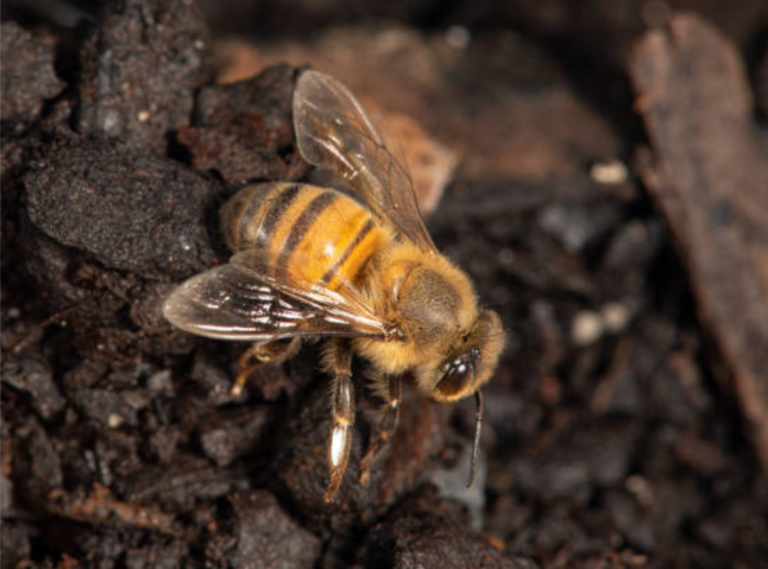When most people think of bee activity, their minds go straight to flowers, nectar, or hives in trees, but the soil beneath our feet plays a crucial and often overlooked role. Certain species of bees, particularly solitary ground-nesting types, are highly influenced by soil composition and structure. Whether sandy, loamy, or clay-heavy, soil type can dramatically affect where and how bees build their homes, forage, and interact with their environment. Understanding this connection is not only fascinating for gardeners and homeowners but also vital for ecological balance and effective bee management.
How Soil Type Influences Bee Activity
Soil type significantly impacts bee activity by determining where bees choose to nest and forage. Around 70% of bee species are ground-nesters, and these bees need specific conditions to thrive. Loose, well-draining soils such as sandy or loamy textures are ideal because they allow easy excavation and maintain the warmth and dryness bees prefer. In contrast, heavy clay soils retain moisture and can cause nests to flood or collapse. Consequently, areas with better-draining soils often see a higher density of solitary bee nests. This variation helps explain why some neighborhoods seem “buzzier” than others, even when floral resources are similar.
Common Ground-Nesting Bees and Their Soil Preferences
Ground-nesting bees like mining bees, digger bees, and sweat bees often show preferences for particular types of soil. Mining bees, for example, favor loose, sandy soils where they can create tunnels without obstruction. Sweat bees might nest in slightly firmer soils but still prefer areas with good drainage. These bees avoid overly compacted or rocky soil that could inhibit their nesting capabilities. Their selective behavior illustrates how intimately tied bee activity is to the earth beneath us. If you’re noticing increased nesting in certain parts of your yard, examining the soil type could provide useful insights or signal the need for help from a reliable bee removal company in Orange County if the activity becomes unmanageable.
Soil Disturbance and Its Effect on Bee Populations
Changes in soil structure, whether through construction, landscaping, or tilling, can significantly disrupt bee activity. Many solitary bees return year after year to the same nesting spots. If those areas are compacted by machinery or altered with fertilizers and chemicals, the bees may abandon the site altogether. On the flip side, newly disturbed land can sometimes invite new nesting, especially if the soil becomes more aerated. Gardeners aiming to support pollinators should aim to maintain stable, undisturbed soil zones, preferably with minimal chemical use. Doing so helps sustain healthy bee populations and ensures the continued pollination of nearby plants.
Identifying Bee Activity in Your Soil
Noticing little holes in the ground, often with tiny piles of soil at their entrance? These could be bee nesting sites. Ground bees are generally non-aggressive and don’t swarm like honey bees, so you might miss them unless you look closely. Their activity often increases in spring and early summer, particularly in well-lit, sloped, and sandy areas. Observing bee behavior around the soil can tell you a lot about the health of your land. Increased bee activity can indicate excellent soil health, while a sudden drop may suggest compaction or contamination that needs attention.
Managing Soil for Healthy and Controlled Bee Presence
If you’re looking to encourage pollinators but manage their presence near human activity zones, the key lies in thoughtful soil management. Create pollinator-friendly zones with sandy or loamy soils away from heavy traffic or dining areas. You can use mulch or stone in areas where you want to discourage nesting, such as children’s play zones or patios. Balancing soil types and planting bee-attracting flowers in select zones allows you to enjoy the benefits of bee activity without facing potential interference. This kind of landscape planning supports both ecological goals and personal comfort.
Urban Development and Its Impact on Soil-Dependent Bee Behavior
As urban areas continue to expand, the natural habitats of many ground-nesting bees are disrupted. Pavement, construction, and compacted soil limit the areas where bees can safely nest. This makes it even more essential for urban planners and gardeners to consider how soil treatment affects bee activity. Green rooftops, community gardens, and urban meadows with intentionally designed soil compositions can help preserve bee populations in city environments. These adaptations not only support pollinators but also contribute to overall biodiversity and healthier urban ecosystems.
Conclusion
The link between bee activity and soil type is a critical component of our natural ecosystem that’s too often overlooked. Soil isn’t just a backdrop for plants; it’s a foundational factor in where and how bees live. Whether you’re a homeowner, gardener, or environmental advocate, recognizing the role soil plays in bee behavior can help you make informed decisions about land use, conservation, and pest control. By fostering the right conditions or managing bee-friendly areas strategically, you can support pollinator health while keeping your space safe and comfortable for everyone.



